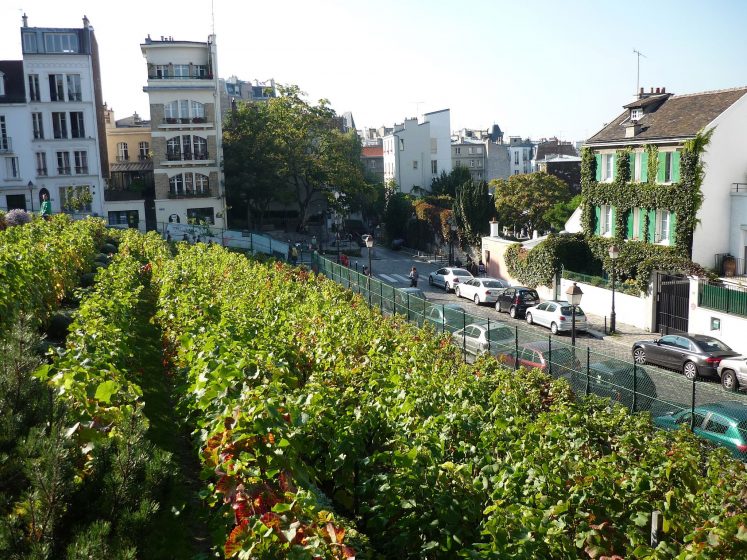Excitement About City Blooming
Excitement About City Blooming
Blog Article
8 Simple Techniques For City Blooming
Table of ContentsRumored Buzz on City BloomingThe Only Guide to City BloomingThe Single Strategy To Use For City BloomingThe 5-Second Trick For City BloomingThe 10-Second Trick For City Blooming
Intrigued in growing food for sale in the City of Chicago? Below is a listing of regularly asked inquiries regarding the guidelines and guidelines that growers need to take into consideration when planning an urban farming task.
The zoning change does not modify any kind of various other codes handling composting, building licenses, buying or renting City had home, organization licenses or ecological contamination. There are existing codes that manage these concerns and they stay completely impact and might be relevant to your job. Area gardens are generally had or handled by public entities, civic organizations or community-based companies and kept by volunteers.
Urban ranches expand food that is meant to be offered, either on a nonprofit or for-profit basis. Due to their industrial function, metropolitan farms require a business permit.
3 Easy Facts About City Blooming Described
The quantity of compost product can not exceed 25 cubic lawns at any provided time according to the criteria in 7-28-715 of the City's Municipal Code. Due to the fact that the soil at most new yard sites requires amending, compost, dirt, timber chips, or other materials can be acquired to create or boost the growing space.

If a structure license is needed then the hoophouse will certainly be taken into consideration an accessory building. You can discover more about the structure license requirements by contacting the Department of Structures. The 25,000-square-foot size restriction is intended to prevent a solitary neighborhood garden from controling a given block or interfering with the block's existing household or commercial personality.
The limit does not apply to gardens situated in Public Open Room (POS) areas. Can there be greater than one neighborhood yard that is 25,000 square feet on a single block? Yes. The dimension restriction relates to private gardens, not to specific blocks. No. Fence is not required, however, yards that have huge parking lot may be needed to set up fencing or other landscaping functions.
The City Blooming Ideas
B1 & B2 areas require that all business use tasks be carried out inside your home. R districts limit commercial task. The regulations mirror the objective and intent of the Zoning Code. Is secure fencing required for city ranches? Yes. Fences might be called for, along with landscape design and screening, for certain auto parking areas and outdoor work or storage space areas depending upon place and the specific activity happening.
Urban farms require structure authorizations and zoning approvals prior to construction (eco-friendly practices). Other kinds of city evaluation might be required depending on specific structures, activities, size, landscape design, licensing, public health and stormwater administration issues.
The Division of Business Matters and Customer Protection can aid figure out the details kind of organization license that's needed. Off street auto parking is needed for a lot of business jobs in Chicago. The called for number of car park spaces is based on the number of workers functioning on site and not the square video of the growing room.
Unknown Facts About City Blooming

Yes. An urban ranch can offer compost material created on website, nevertheless, the procedure has to follow the guidelines in 7-28-715 of the Chicago Municipal Code. Yes. Aquaponic systems are enabled inside your home on metropolitan ranches in lots of zoning areas. A zoning review and structure license is needed in order to install frameworks or systems and an organization certificate is required as defined above.
Approximately 5 hives or colonies of honey bees might be kept as an accessory usage. Beekeepers have to sign up with the Illinois Division of Agriculture. For more information concerning the suggested zoning amendment you may speak to the Department of Real Estate and Economic Development, Bureau of Planning and Zoning at 312.744.8563.
Farming in cities and metropolitan locations A city ranch in Chicago. Urban agriculture refers to different methods of growing. https://www.tumblr.com/cityblooming1/754396373643853824/welcome-to-our-website-city-blooming-is-all-about?source=share, handling, and dispersing food in metropolitan areas. The term additionally relates to the area tasks of animal husbandry, tank farming, beekeeping, and cultivation in a city context. Urban farming is differentiated from peri-urban agriculture, which happens in rural areas beside suburban areas.
The smart Trick of City Blooming That Nobody is Talking About
It can involve a movement of organic farmers, "foodies" and "locavores", who seek to develop social networks based on a common values of nature and area holism. These networks can develop using Go Here formal institutional assistance, coming to be integrated right into local town as a "change community" movement for lasting metropolitan development.
The more direct accessibility to fresh veggie, fruit, and meat items that may be know with urban agriculture can boost food safety and food security while reducing food miles, leading to reduced greenhouse gas discharges, thus adding to climate modification reduction. Some of the first evidence of city agriculture comes from Mesopotamia.
Report this page